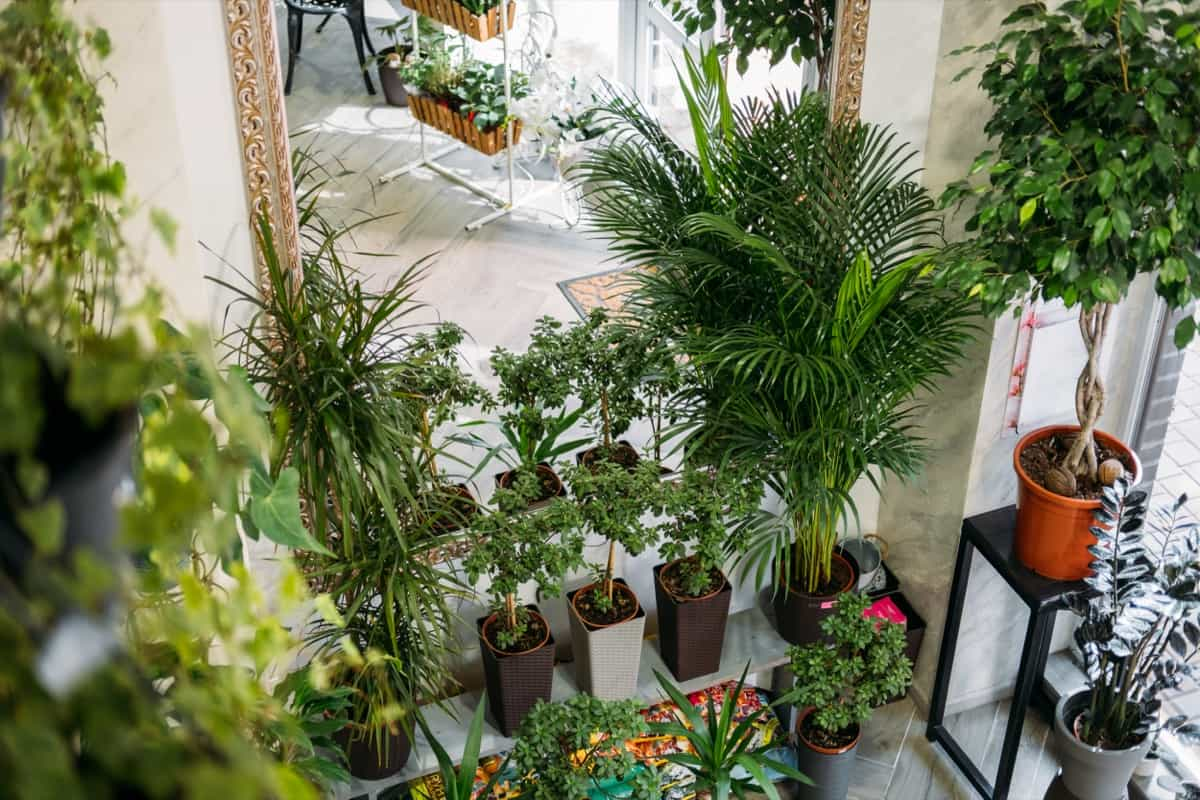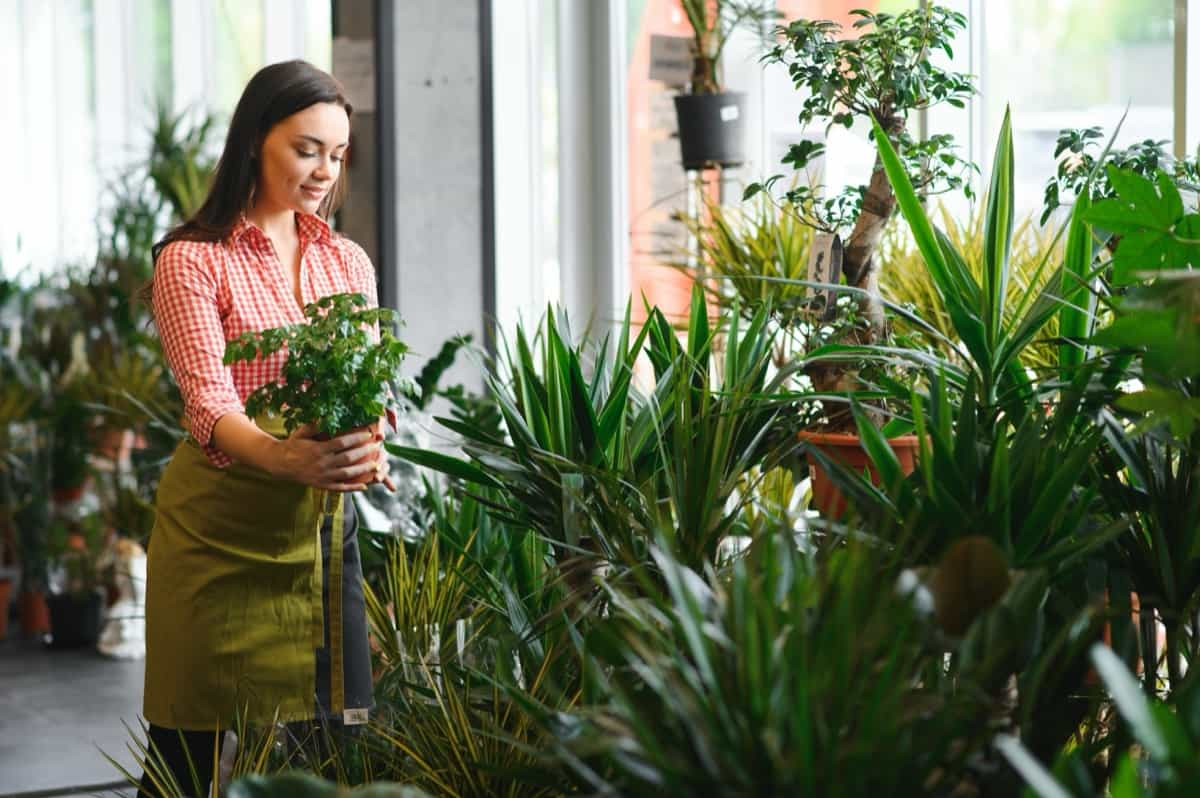By strategically placing greenery throughout your home, you can enhance aesthetics and create a healthier environment. Adding indoor plants to your home not only boosts the visual appeal but also contributes to cleaner air. The placement of these green companions plays a crucial role in their growth and impact on your living spaces.

Sunlight Requirements: Matching Plants with Light Availability
Different plants have varying needs regarding light availability. Some thrive in bright, direct sunlight, while others prefer indirect or low-light conditions. South-facing windows typically receive the most intense sunlight, making them ideal for sun-loving plants like succulents and cacti. East or west-facing windows offer moderate light levels suitable for different plant species.
If you have limited natural light in certain areas, consider supplementing with grow lights to ensure your plants get the necessary light they need to flourish. Remember that overexposure to direct sunlight can harm some delicate plant varieties, so finding the right balance is key.
Humidity and Temperature Considerations for Indoor Plants
Different plants have varying humidity requirements, so it’s essential to match them with the right environment. Some plants thrive in high humidity levels, such as ferns and orchids, while others, like succulents, prefer drier conditions. It’s crucial to research each plant species’ specific needs before placing them in your home.
In case you missed it: Transform Your Indoor Garden: Top Benefits of Pink Salt for Houseplants

In terms of temperature, most indoor plants do well in typical room temperatures ranging from 18-23°C during the day and cooler at night. Avoid placing plants near drafty windows or heating vents that can cause temperature fluctuations. To maintain humidity levels for your plants, consider using a humidifier or grouping moisture-loving plants to create a microclimate.
Strategic Placement in Living Rooms for Maximum Impact
Consider positioning a statement plant like a fiddle leaf fig in a corner to add height and drama. Opt for trailing plants like pothos or spider plants on shelves or mantels to create depth and visual interest. Grouping smaller plants on a side table can also make a charming focal point. Place air-purifying varieties such as snake plants near seating areas to enhance air quality while adding style.
Don’t forget about utilizing empty corners with tall palms or ferns for added greenery without taking up too much floor space. Mix and match different plant textures and sizes of pots for an eclectic look that complements your existing decor.
Utilizing Kitchen Spaces: Best Plants for High Humidity Areas
Ferns, peace lilies, and spider plants thrive in moisture-rich environments. Their lush green leaves can bring a touch of nature into your cooking space. Consider hanging planters or wall-mounted shelves to maximize vertical space while keeping your countertops clear. Herbs like basil, mint, and parsley, with their vibrant colors, add visual appeal and also provide fresh ingredients for your culinary creations.
Succulent plants like aloe vera or snake plants are low-maintenance options that can withstand fluctuating humidity levels in kitchens. Place them near windows or under skylights to ensure they take adequate sunlight throughout the day.
Bedroom Plant Placement: Creating a Restful Environment
Choose low-maintenance plants like peace lilies or snake plants, which thrive in indirect sunlight and are perfect for bedrooms with limited natural light. Positioning a plant on your nightstand can add nature to your sleep space, fostering a calming atmosphere conducive to winding down after a long day. Consider hanging planters near windows or placing small pots on shelves for added tranquility without taking up precious floor space. Incorporating greenery into your bedroom décor enhances aesthetics and also contributes to better air quality and overall well-being.
In case you missed it: 6 Succulent Beauties: Easy-to-Grow Indoor Plants with Stunning Colours

Bathroom Plants: Thriving in Low Light and High Humidity
These plants are perfect for transforming your bathroom into a tranquil oasis. Consider adding spider plants, peace lilies, or snake plants. These thrive in these conditions and require minimal maintenance. Their vibrant leaves can add an element of freshness to your bathroom decor. Position your plants near natural light sources like windowsills, or opt for artificial lighting if natural light is limited. Remember to rotate your plants’ positions occasionally to ensure even growth patterns.
Entryways and Hallways: Making a Green First Impression
These spaces provide the perfect opportunity to create a welcoming atmosphere from the moment you step inside. Placing a vibrant plant near the entrance can instantly uplift the mood of anyone entering your home. Consider adding a tall, statement plant like a Fiddle Leaf Fig or Dracaena to make a bold first impression. If space is limited, opt for smaller plants like Spider Plants or Pothos that can be hung or placed on shelves along the hallway walls.
Greenery in entryways not only adds visual appeal but also helps purify the air and reduce toxins brought in from the outside. Choose plants that thrive in indirect light since entryways typically receive minimal sunlight throughout the day. Hallways with lower ceilings can benefit from cascading plants like English Ivy or String of Pearls to add an element of elegance.
Office and Study Areas: Boosting Productivity with Plants
Not only do they add a touch of nature to your workspace, but they also have the power to boost productivity and creativity. Choose plants like succulents, spider plants, or peace lilies that thrive in low-light conditions commonly found indoors. If possible, position your plants near natural light sources to ensure they receive adequate sunlight for optimal growth.
Consider vertical plant stands or wall-mounted planters to maximize space utilization in smaller work areas. Introduce different textures and colors with a variety of plant species to create an inspiring environment. Remember to water and care for your office plants regularly to maintain their health and vibrancy.
Seasonal Adjustments: Rotating Plants Based on Changing Conditions
Rotating your plants based on evolving conditions is essential to ensuring they thrive year-round. During the warmer months, consider moving sun-loving plants closer to windows for maximum sunlight exposure. Rotating them promotes even growth and prevents wilting. In colder seasons, move sensitive plants away from drafty areas or heaters that could dry them out. Opt for low-light varieties that can better adapt to reduced daylight hours.
In case you missed it: 15 Indoor Plants That Don’t Cause Allergies: Best Hypoallergenic Plants for Indoor Garden

Some plants may benefit from a trip outside during mild weather, where they can breathe fresh air and rejuvenate themselves with natural light before being brought back indoors. By strategically placing indoor plants in different areas based on light, humidity, and temperature requirements, you can make a lush green oasis that looks beautiful and also improves air quality and overall well-being.